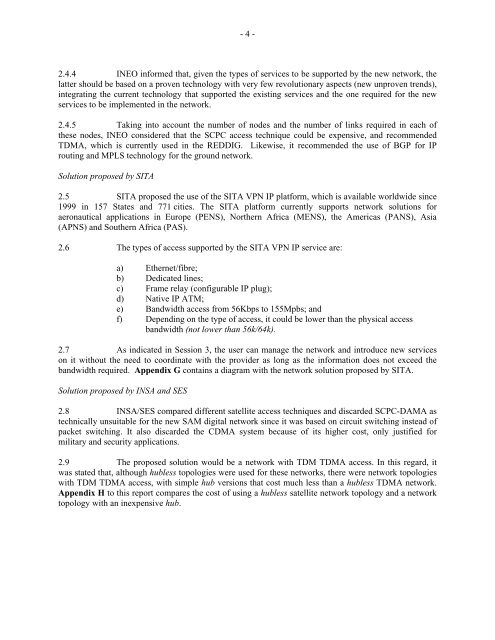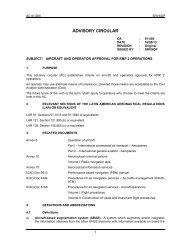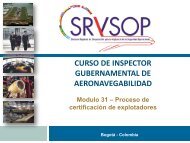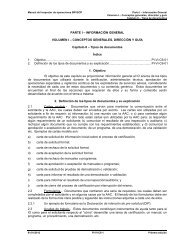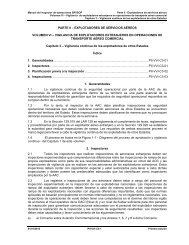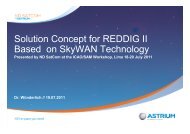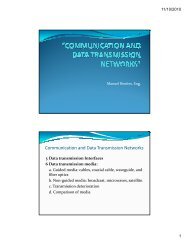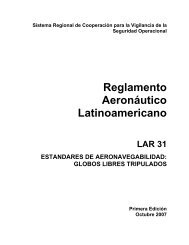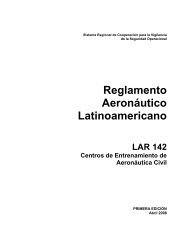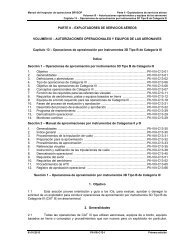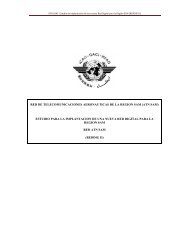international civil aviation organization south american ... - ICAO
international civil aviation organization south american ... - ICAO
international civil aviation organization south american ... - ICAO
Create successful ePaper yourself
Turn your PDF publications into a flip-book with our unique Google optimized e-Paper software.
- 4 -<br />
2.4.4 INEO informed that, given the types of services to be supported by the new network, the<br />
latter should be based on a proven technology with very few revolutionary aspects (new unproven trends),<br />
integrating the current technology that supported the existing services and the one required for the new<br />
services to be implemented in the network.<br />
2.4.5 Taking into account the number of nodes and the number of links required in each of<br />
these nodes, INEO considered that the SCPC access technique could be expensive, and recommended<br />
TDMA, which is currently used in the REDDIG. Likewise, it recommended the use of BGP for IP<br />
routing and MPLS technology for the ground network.<br />
Solution proposed by SITA<br />
2.5 SITA proposed the use of the SITA VPN IP platform, which is available worldwide since<br />
1999 in 157 States and 771 cities. The SITA platform currently supports network solutions for<br />
aeronautical applications in Europe (PENS), Northern Africa (MENS), the Americas (PANS), Asia<br />
(APNS) and Southern Africa (PAS).<br />
2.6 The types of access supported by the SITA VPN IP service are:<br />
a) Ethernet/fibre;<br />
b) Dedicated lines;<br />
c) Frame relay (configurable IP plug);<br />
d) Native IP ATM;<br />
e) Bandwidth access from 56Kbps to 155Mpbs; and<br />
f) Depending on the type of access, it could be lower than the physical access<br />
bandwidth (not lower than 56k/64k).<br />
2.7 As indicated in Session 3, the user can manage the network and introduce new services<br />
on it without the need to coordinate with the provider as long as the information does not exceed the<br />
bandwidth required. Appendix G contains a diagram with the network solution proposed by SITA.<br />
Solution proposed by INSA and SES<br />
2.8 INSA/SES compared different satellite access techniques and discarded SCPC-DAMA as<br />
technically unsuitable for the new SAM digital network since it was based on circuit switching instead of<br />
packet switching. It also discarded the CDMA system because of its higher cost, only justified for<br />
military and security applications.<br />
2.9 The proposed solution would be a network with TDM TDMA access. In this regard, it<br />
was stated that, although hubless topologies were used for these networks, there were network topologies<br />
with TDM TDMA access, with simple hub versions that cost much less than a hubless TDMA network.<br />
Appendix H to this report compares the cost of using a hubless satellite network topology and a network<br />
topology with an inexpensive hub.


